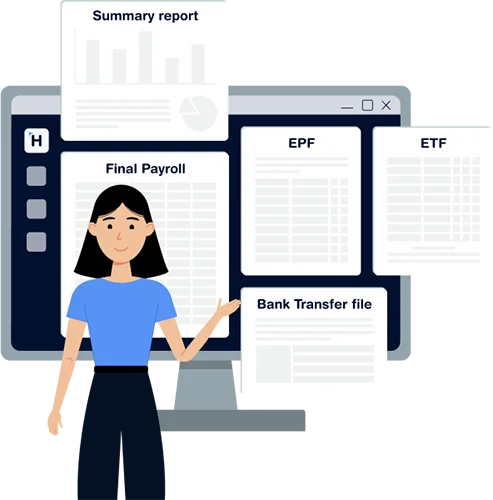In Sri Lanka, it’s still common to see small businesses using manual attendance sheets to track employee time, whether it’s a daily signature log, Excel sheet, or even a basic register at the reception. For teams of fewer than 10, this might seem simple and manageable.
But as soon as your team grows beyond a handful of people, manual attendance tracking quickly becomes a source of inefficiency, error, and stress. Whether you run a retail shop in Gampaha, a small logistics company in Katunayake, or a creative agency in Colombo, managing attendance manually has hidden costs.
Let’s explore the key differences between manual attendance sheets and modern time tracking software, and why many SMEs in Sri Lanka are making the switch.
1. Accuracy: Reducing Human Error
Manual systems rely on humans to clock in correctly and managers to record and calculate data manually. It’s not uncommon for employees to forget to mark their presence or for HR to miscalculate hours worked, overtime, or no-pay days.
Time tracking software, on the other hand, automates all of this. Employees check in using a mobile app, web dashboard, or biometric device. The system logs exact times, down to the minute, eliminating ambiguity and reducing the risk of calculation errors. For payroll, that’s a big win.
2. Time Saved on Monthly Processing
At the end of each month, HR or admin staff often spend hours reviewing attendance logs, cross-checking absences, and manually calculating payroll deductions. For SMEs, this eats into valuable time that could be used to grow the business.
With a digital attendance solution, reports are automatically generated, including late arrivals, absences, overtime, and no-pay days. These can be exported and integrated with your payroll system to complete salary processing in minutes instead of hours.
3. Visibility into Team Attendance Patterns
Manual systems offer little visibility into attendance trends. For example, how do you know which employees are regularly late or which teams are consistently understaffed?
Time tracking software gives you reports and dashboards that show these patterns clearly. Whether it’s spotting a high absenteeism rate on Mondays or identifying a frequent mismatch between scheduled shifts and attendance, this data helps SMEs make better operational decisions.
4. Improved Transparency and Employee Trust
In a manual system, if there’s a payroll error due to missing or incorrect attendance, it can damage trust, especially if employees feel they’ve been unfairly docked pay.
With digital systems, employees can view their own attendance history, see when they clocked in/out, and raise issues early. This builds transparency and reduces conflicts between teams and HR.
5. Integration with Payroll and Leave Management
One of the biggest advantages of time tracking software is seamless integration. It connects directly with your payroll software and leave management system. When someone takes approved leave, it reflects automatically. When they clock in late or miss a day, no-pay deductions are calculated automatically.
Manual systems require someone to manually reconcile all this data, a tedious task that increases the risk of errors or inconsistencies during payroll.
6. Flexibility for On-Site and Hybrid Teams
Manual attendance makes sense when everyone works from a single office. But what happens when someone works remotely, visits a client site, or clocks in from a different branch?
Modern time tracking tools support location-based or remote check-ins, meaning they’re ideal for today’s mix of in-office, hybrid, and mobile teams. SMEs in industries like field services, construction, or digital services benefit immensely from this flexibility.
When Should an SME Make the Switch?
If your business is growing beyond 10 people, if payroll errors are increasing, or if your team works in multiple locations, it’s likely time to move away from manual tracking. You don’t need a large enterprise budget either. Many HRIS tools, including local solutions like Humanised, offer affordable packages for small businesses with only core time and attendance modules to start with.
The True Cost of ‘Sticking With What Works’
While manual attendance sheets might feel familiar, they can silently cost you time, money, and employee goodwill. As compliance requirements grow and employee expectations evolve, it’s worth investing in tools that bring clarity and structure.
Remember, time tracking software isn’t just a convenience, it’s a smart step forward for growing Sri Lankan SMEs.



